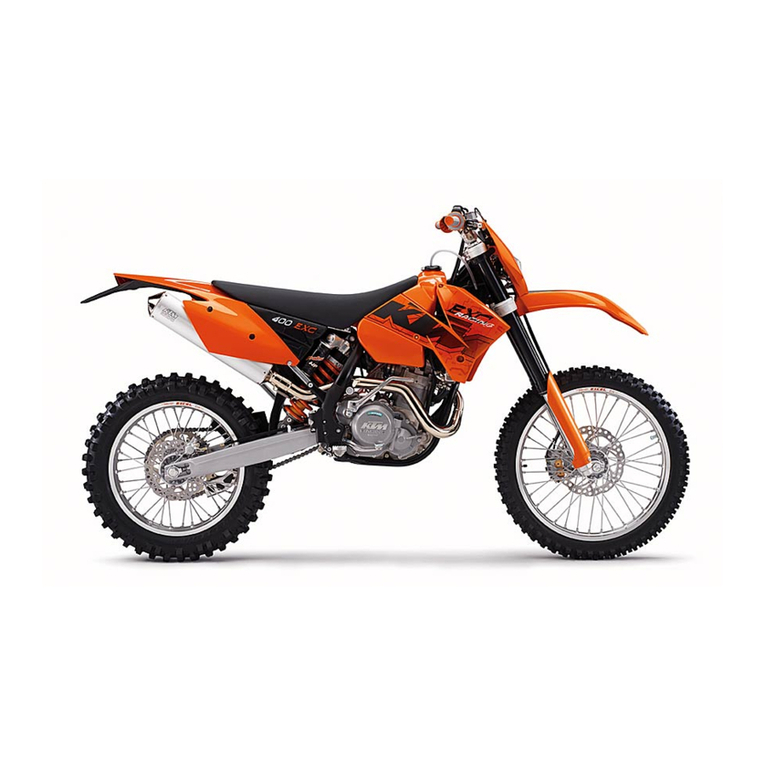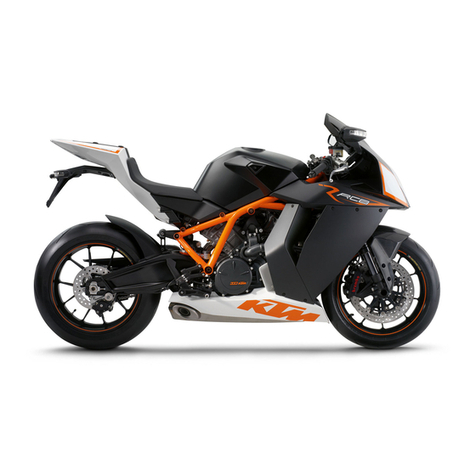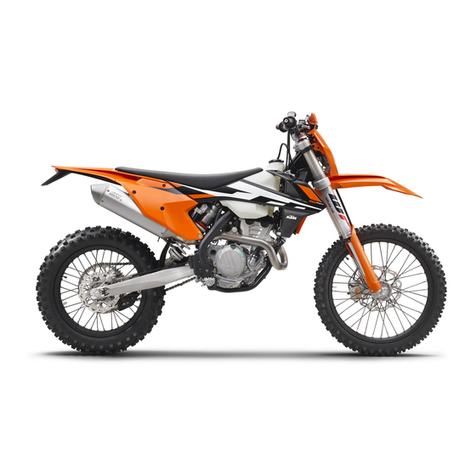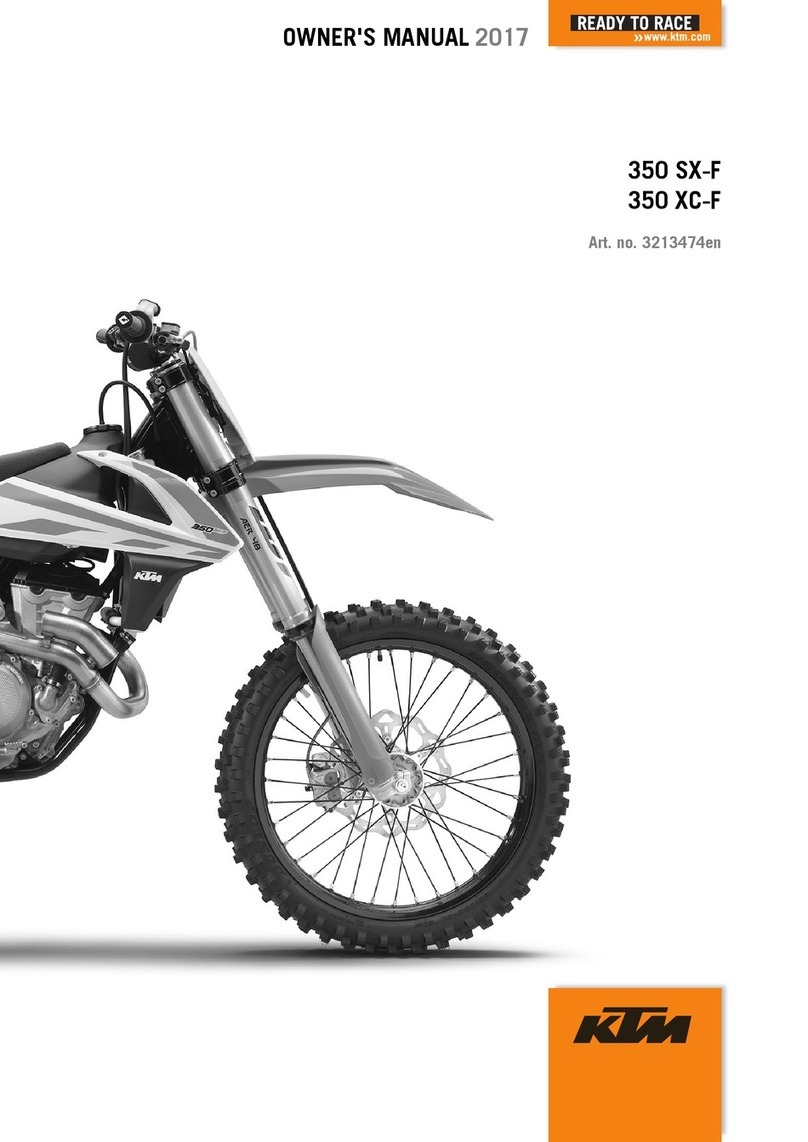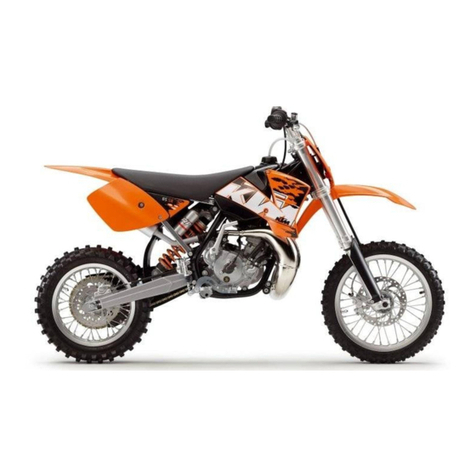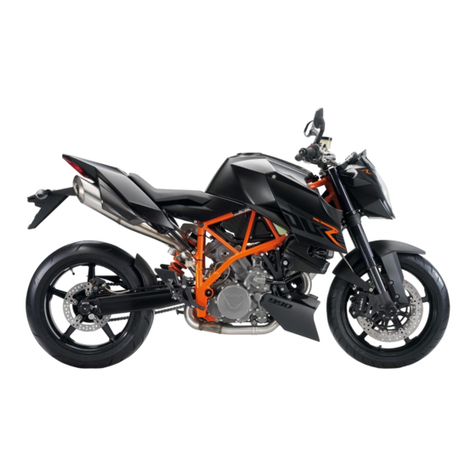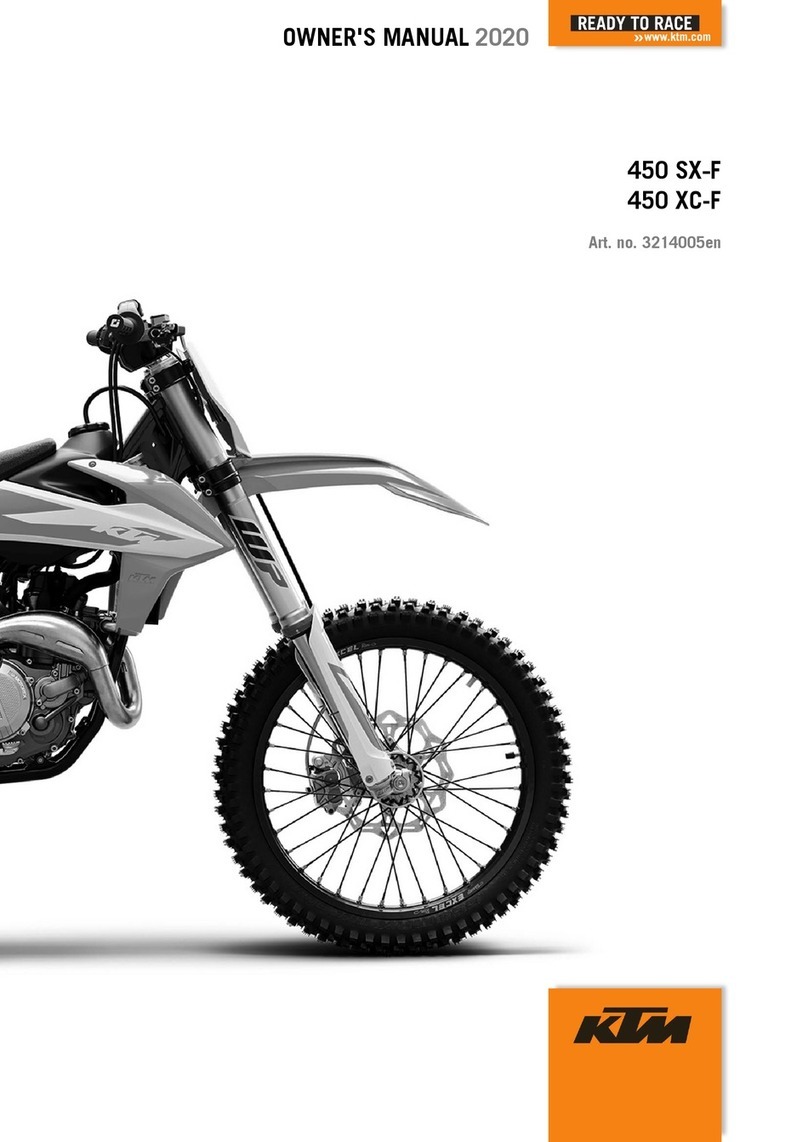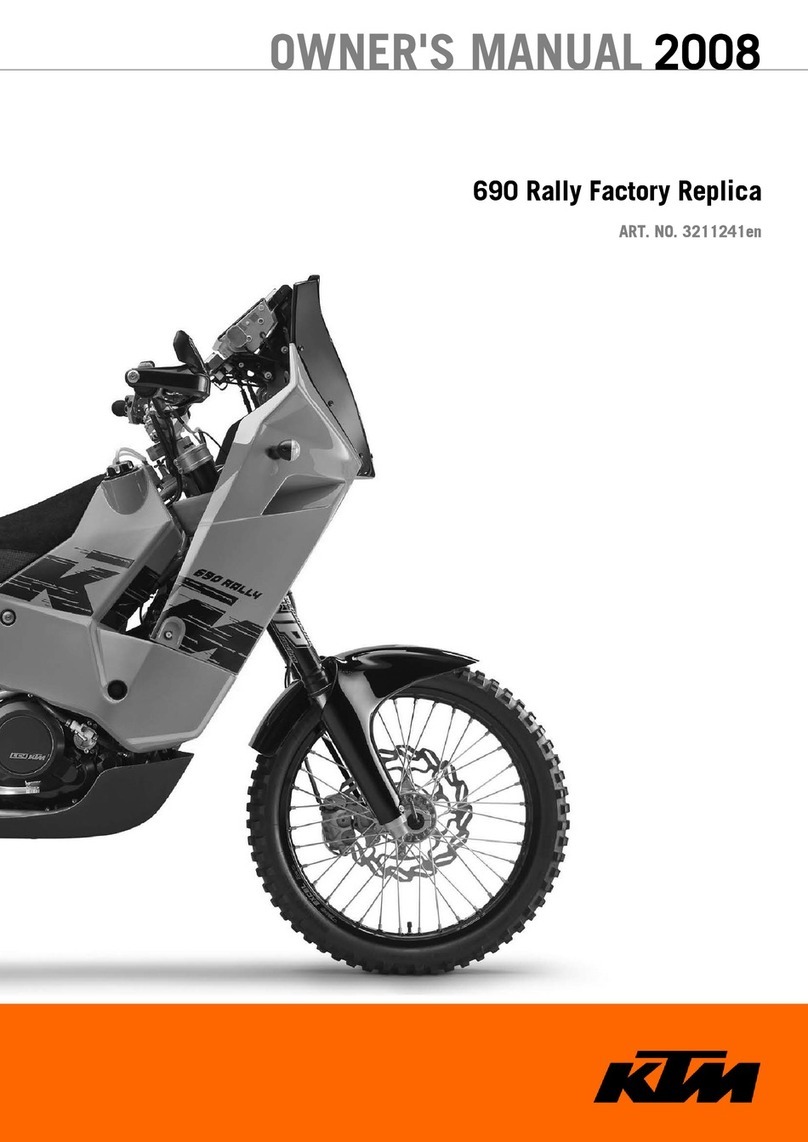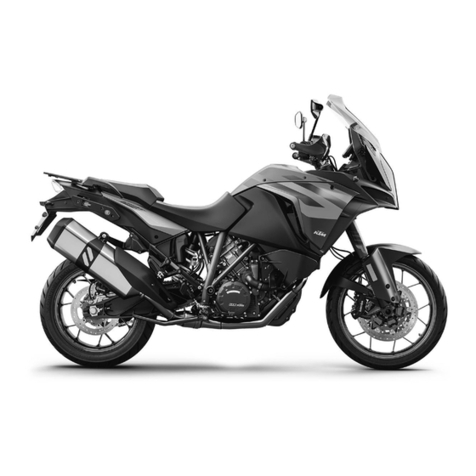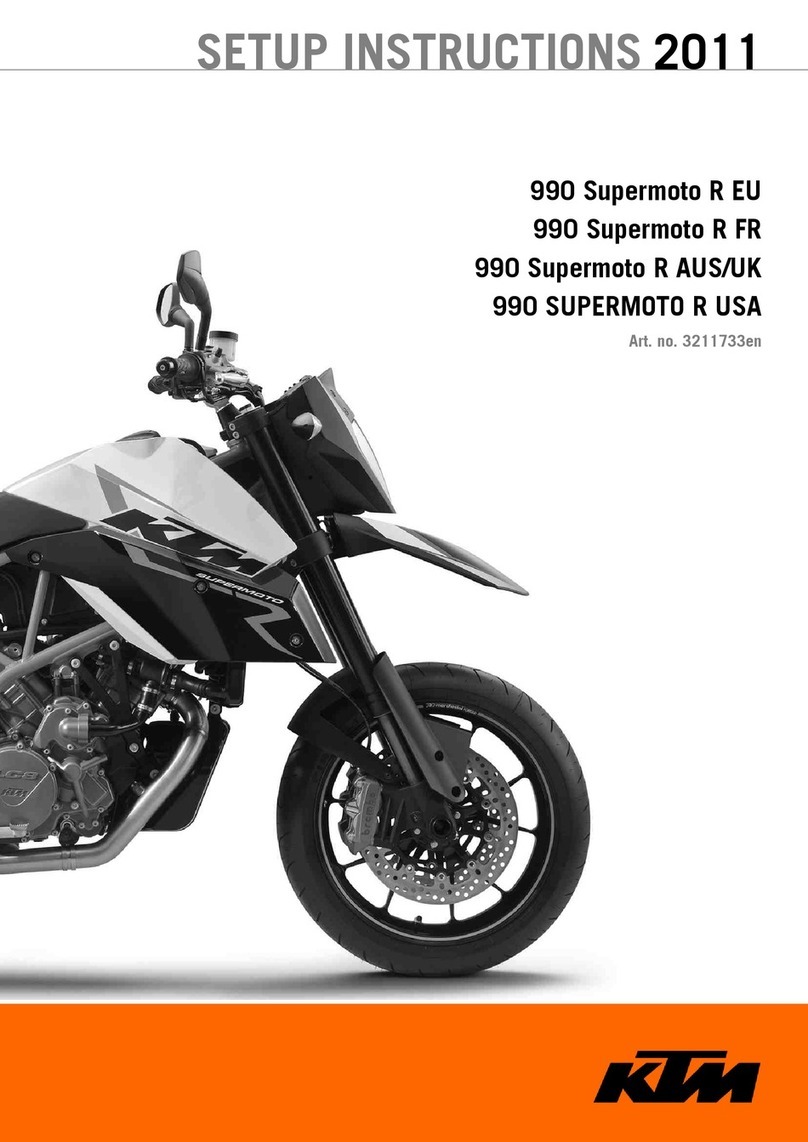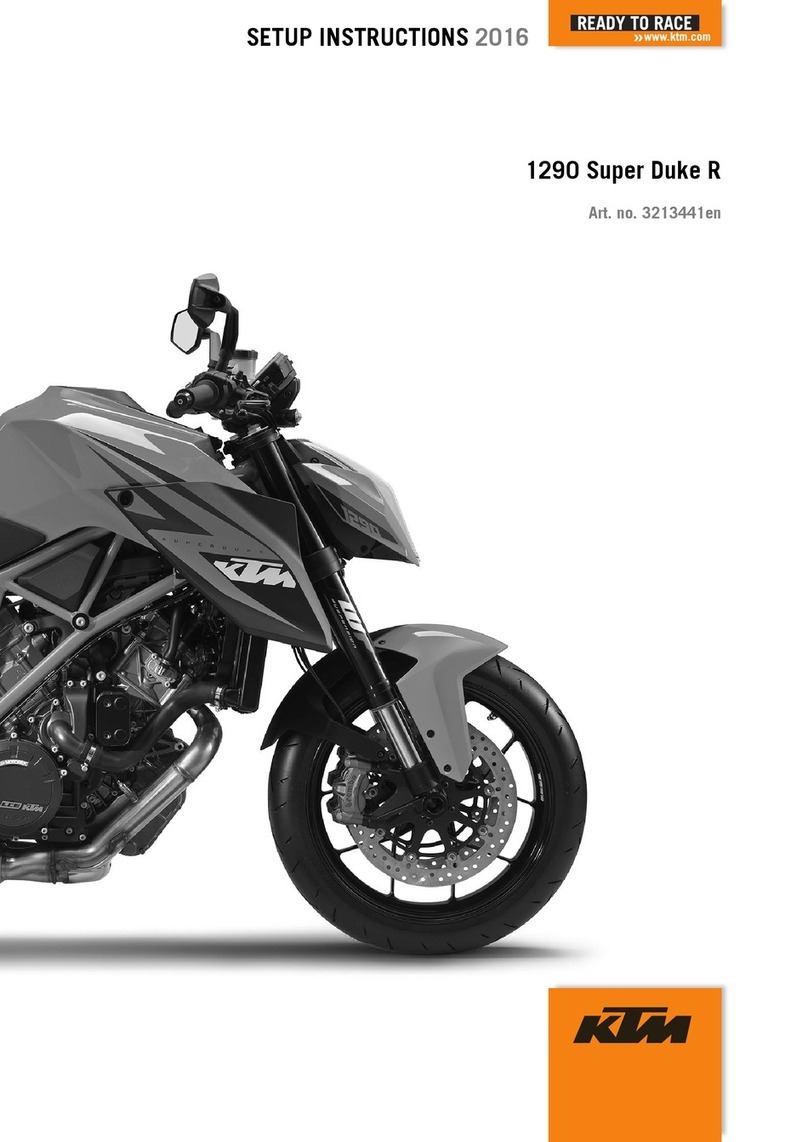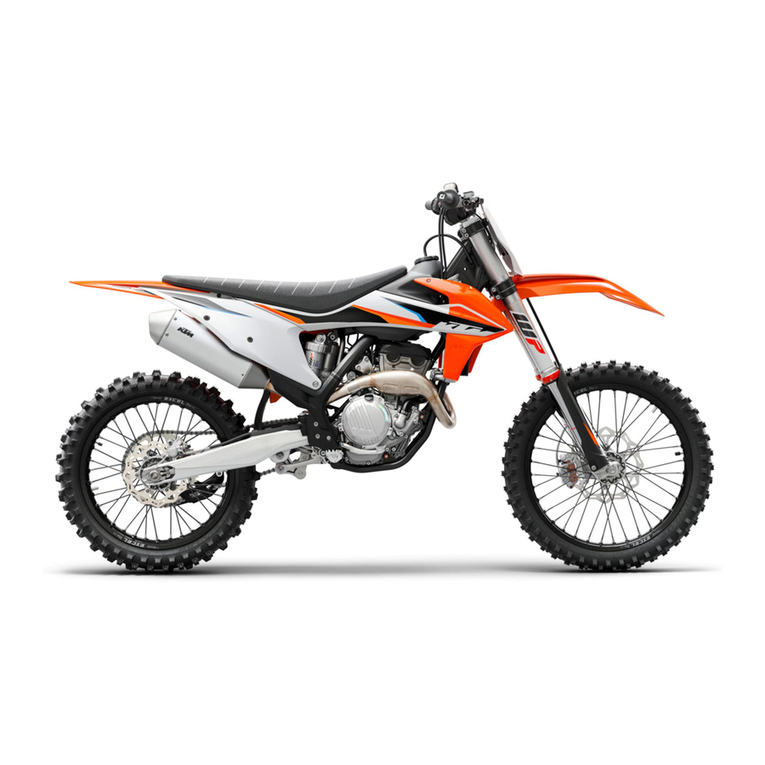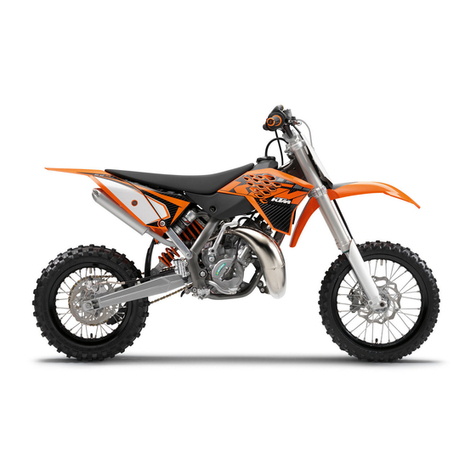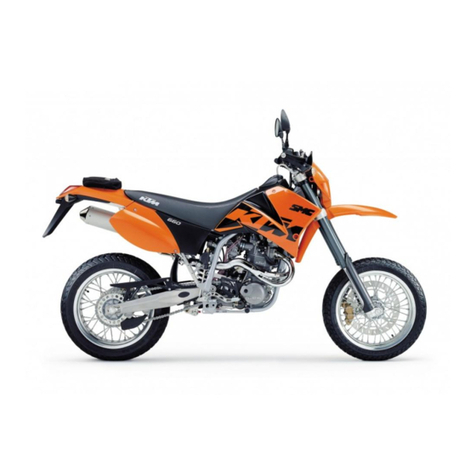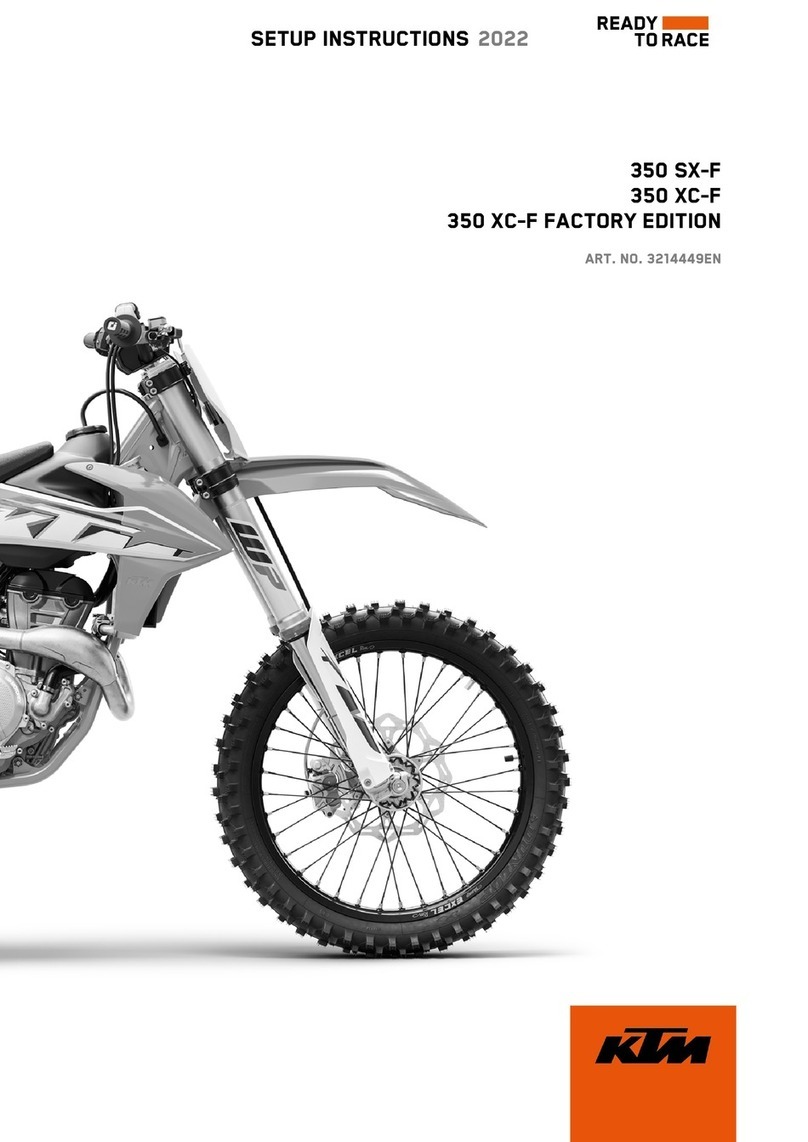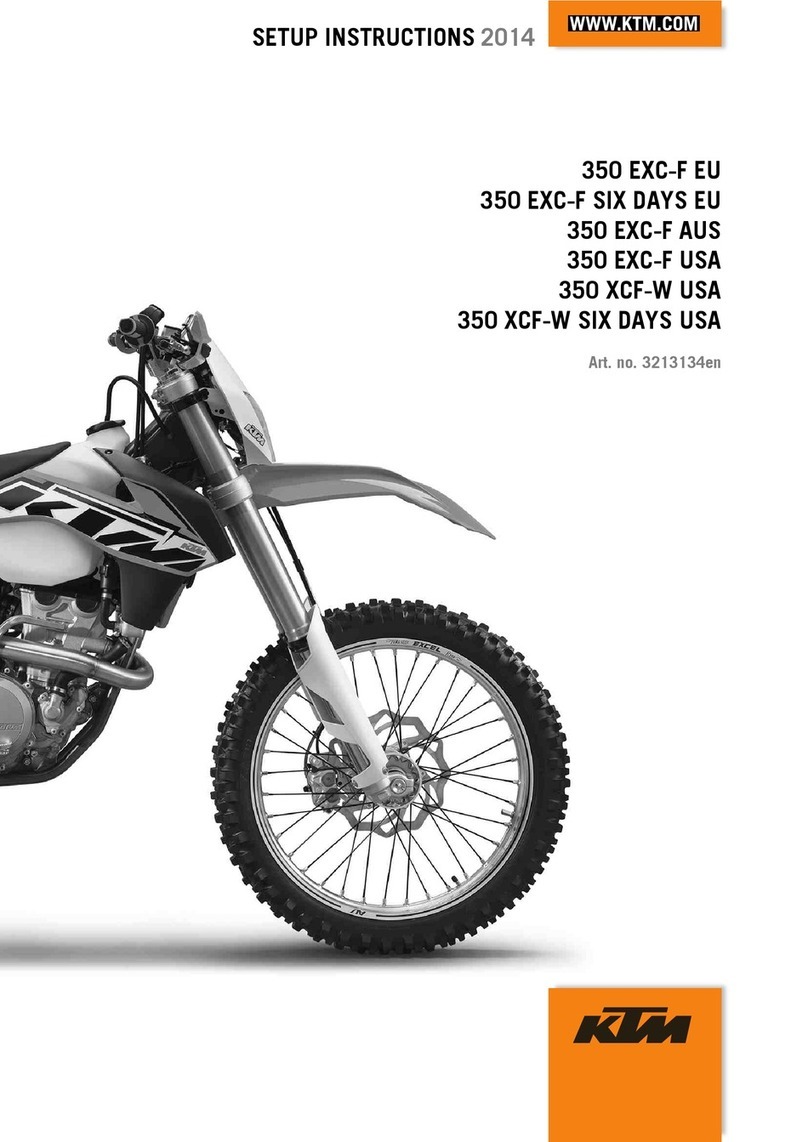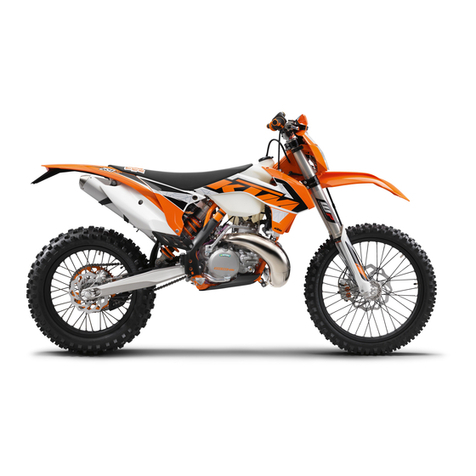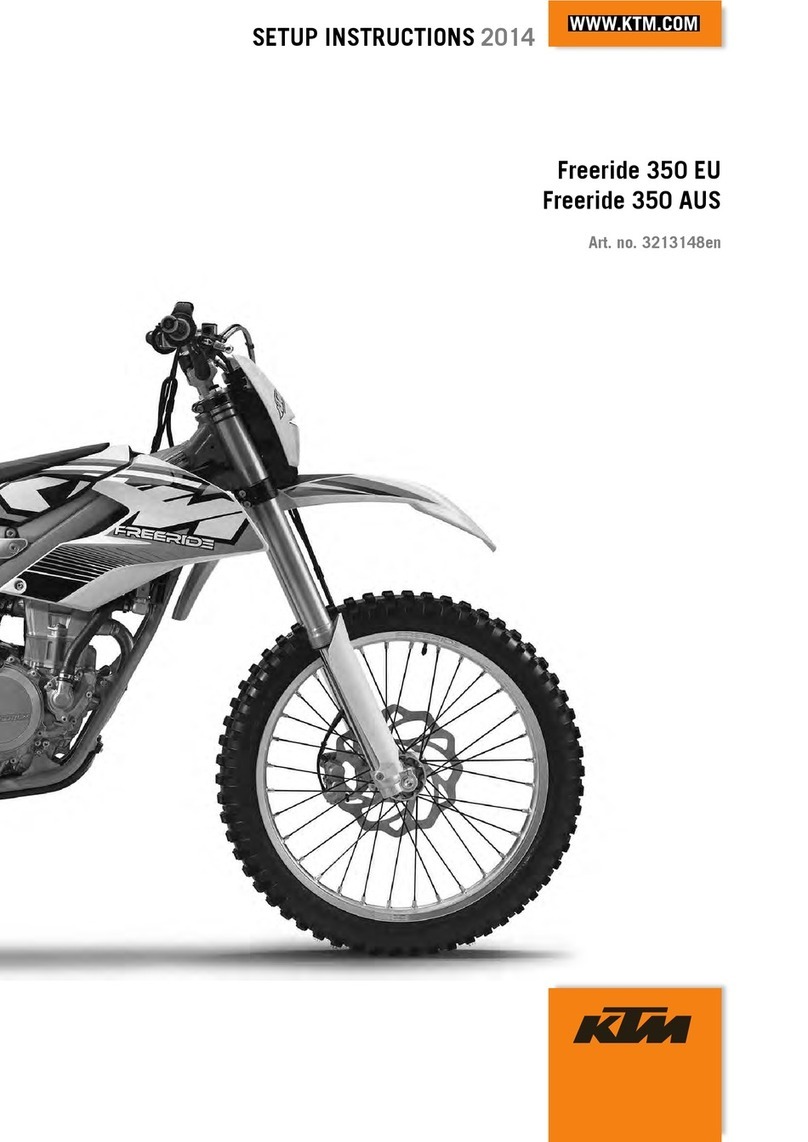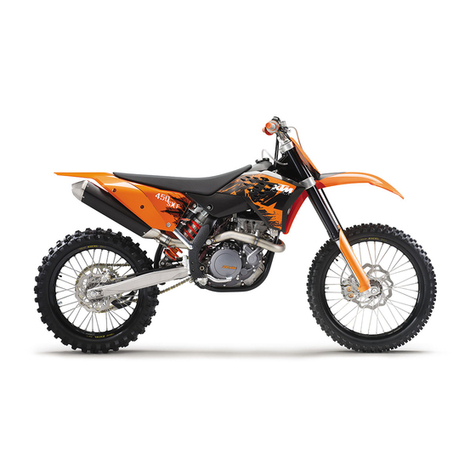INDEX »4
IMPORTANT . . . . . . . . . . . . . . . . . . . . . . . . . . . . . . . . . . . . .1
INTRODUCTION . . . . . . . . . . . . . . . . . . . . . . . . . . . . . . . . . .2
IMPORTANT LIMITED WARRANTY AND LIMITED
GUARANTEE INFORMATION . . . . . . . . . . . . . . . . . . . . . . . . .3
SERIAL NUMBER LOCATIONS . . . . . . . . . . . . . . . . . . . . . . . .6
Chassis number, Type label . . . . . . . . . . . . . . . . . . . . . . . . .6
Engine number, engine type . . . . . . . . . . . . . . . . . . . . . . . .6
OPERATION INSTRUMENTS . . . . . . . . . . . . . . . . . . . . . . . . .7
Clutch lever . . . . . . . . . . . . . . . . . . . . . . . . . . . . . . . . . . .7
Choke lever . . . . . . . . . . . . . . . . . . . . . . . . . . . . . . . . . . . .7
Hand brake lever . . . . . . . . . . . . . . . . . . . . . . . . . . . . . . . .7
Multi-functional digital speedometer . . . . . . . . . . . . . . . . . .8
Display . . . . . . . . . . . . . . . . . . . . . . . . . . . . . . . . . . . . . . .8
Setting options in the display . . . . . . . . . . . . . . . . . . . . . .10
Cooling liquid temperature display . . . . . . . . . . . . . . . . . .12
Indicator lamps . . . . . . . . . . . . . . . . . . . . . . . . . . . . . . . .12
Ignition lock . . . . . . . . . . . . . . . . . . . . . . . . . . . . . . . . . .13
Combination switch . . . . . . . . . . . . . . . . . . . . . . . . . . . . .13
Emergency OFF tip switch, starter tip switch . . . . . . . . . . .14
Filler cap . . . . . . . . . . . . . . . . . . . . . . . . . . . . . . . . . . . .14
Fuel taps . . . . . . . . . . . . . . . . . . . . . . . . . . . . . . . . . . . .14
Baggage carrier, grips . . . . . . . . . . . . . . . . . . . . . . . . . . . .15
Seat lock, removing the seat . . . . . . . . . . . . . . . . . . . . . . .15
Tool set . . . . . . . . . . . . . . . . . . . . . . . . . . . . . . . . . . . . .16
Helmet lock . . . . . . . . . . . . . . . . . . . . . . . . . . . . . . . . . .16
Shift lever . . . . . . . . . . . . . . . . . . . . . . . . . . . . . . . . . . . .16
Side stand . . . . . . . . . . . . . . . . . . . . . . . . . . . . . . . . . . .17
Foot brake pedal . . . . . . . . . . . . . . . . . . . . . . . . . . . . . . .17
Footrests . . . . . . . . . . . . . . . . . . . . . . . . . . . . . . . . . . . .17
Compression damping of fork . . . . . . . . . . . . . . . . . . . . . .18
Rebound damping of fork . . . . . . . . . . . . . . . . . . . . . . . . .18
Spring preload of the fork . . . . . . . . . . . . . . . . . . . . . . . . .18
Damping action during compression of shock absorber . . . .19
Rebound damping of shock absorber . . . . . . . . . . . . . . . . .19
GENERAL TIPS AND WARNINGS FOR STARTING
THE MOTORCYCLE . . . . . . . . . . . . . . . . . . . . . . . . . . . . . . .20
Instructions for initial operation . . . . . . . . . . . . . . . . . . . .20
Running in the LC8 engine . . . . . . . . . . . . . . . . . . . . . . . .20
Accessories and payload . . . . . . . . . . . . . . . . . . . . . . . . . .21
DRIVING INSTRUCTIONS . . . . . . . . . . . . . . . . . . . . . . . . . .22
Check the following before each start . . . . . . . . . . . . . . . .22
Starting when the engine is cold . . . . . . . . . . . . . . . . . . . .24
Starting when the engine is warm or hot . . . . . . . . . . . . . .25
Starting off . . . . . . . . . . . . . . . . . . . . . . . . . . . . . . . . . . .25
Shifting/Riding . . . . . . . . . . . . . . . . . . . . . . . . . . . . . . . .25
Braking . . . . . . . . . . . . . . . . . . . . . . . . . . . . . . . . . . . . .26
Stopping and parking . . . . . . . . . . . . . . . . . . . . . . . . . . . .27
Fuel, refueling . . . . . . . . . . . . . . . . . . . . . . . . . . . . . . . . .28
PERIODIC MAINTENANCE SCHEDULE . . . . . . . . . . . . . . . . .29
MAINTENANCE WORK ON CHASSIS AND ENGINE . . . . . . . .33
Adjusting the fork and shock absorber . . . . . . . . . . . . . . .34
Adjusting compression damping of fork . . . . . . . . . . . . . . .34
Adjusting rebound damping of fork . . . . . . . . . . . . . . . . . .35
Adjusting the spring preload on the fork . . . . . . . . . . . . . . .35
Compression damping of shock absorber . . . . . . . . . . . . . .36
Rebound damping of shock absorber . . . . . . . . . . . . . . . . .37
Breathing the fork legs . . . . . . . . . . . . . . . . . . . . . . . . . .37
Checking the chain tension . . . . . . . . . . . . . . . . . . . . . . .38
Correcting the chain tension . . . . . . . . . . . . . . . . . . . . . .38
Chain maintenance . . . . . . . . . . . . . . . . . . . . . . . . . . . . .39
